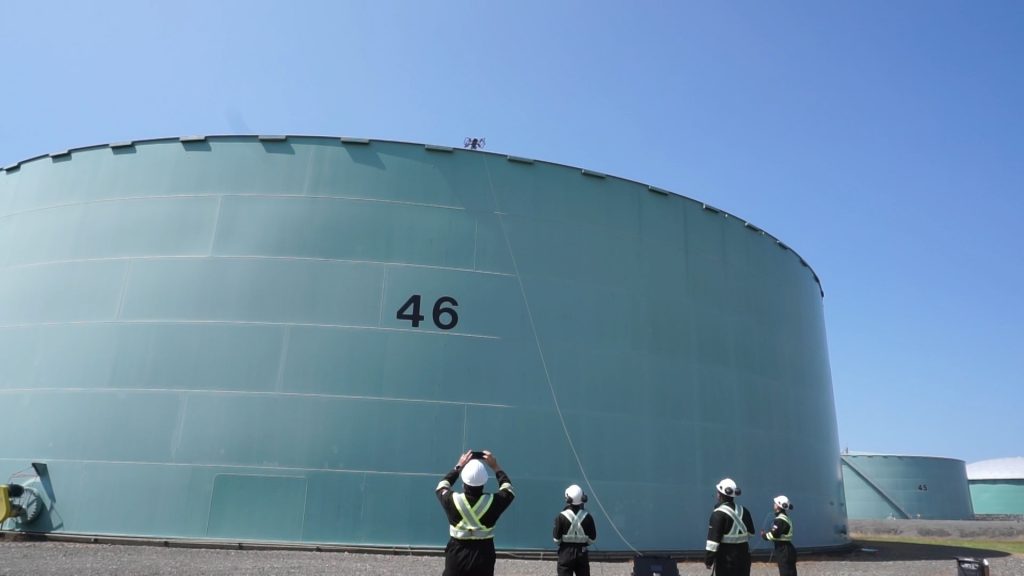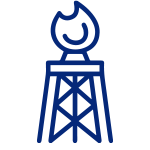
Challenging height of the tank shell and roof
Requirement to inspect pipes from various angles
High temperatures
of the flare stack
Refineries are known for operating under harsh conditions of high pressure and temperature, which can cause damage to equipment over time, leading to defects such as internal corrosion, cracking, and erosion. Non-Destructive Testing (NDT) inspections are necessary for refineries to ensure safety and reliability. These inspections can detect any defects in pipes, tanks, flare stacks, and other equipment that may affect their structural integrity and functionality. Regular Ultrasonic Thickness (UT) inspections help refineries maintain safe and reliable equipment, which prevents incidents, reduces downtime, and increases productivity.
Conventional inspection methods in refineries are known to be costly, time-consuming, and pose risks to inspectors. However, technological advancements have led to the development of intelligent flying robots that can perform inspections faster, cost-effectively, and safely. These robots can avoid downtime as inspections can be done while the equipment is in service, resulting in increased productivity and cost savings.
During a refinery inspection, SKYRON took UT measurements on three assets: a tank, a complex network of pipes, and an in-service flare stack. The inspection presented several challenges due to the height of the tank shell and roof, the requirement to inspect pipes from various angles, and the high temperatures of the flare stack.
The inspection process in the refinery began with an examination of a tank, which is challenging for inspectors due to the risks associated with working at elevated heights and encountering obstructions or limited access points. Fortunately, SKYRON has simplified this process and allowed inspectors to operate securely on the ground. With its advanced HD camera system, SKYRON enables operators to conduct inspections beyond the line of sight and navigate to limited access points, such as the tank roof, even when the robot is out of sight due to distance. Furthermore, SKYRON’s wind handling capabilities and 100-meter tether cable allow operators to take UT measurements from the tank shell and roof with ease and precision, reducing the risks of accidents associated with high winds and obstructions. SKYRON enabled inspectors to take 155 readings within just 45 minutes of flight time, eliminating the need for high-altitude climbing and significantly reducing the risks involved for inspectors.
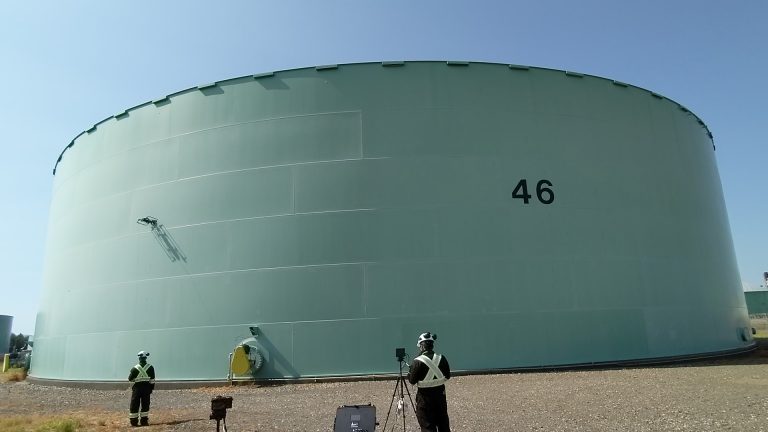
The second asset on the inspection list was a complex network of pipes. Inspecting these structures comprehensively requires examining them from multiple angles, which can be challenging and may require disassembling the pipes and elbows, causing disruptions and delays in refinery operations. Additionally, these structures may be located in hard-to-reach areas or obstructed by other equipment, further complicating the inspection process. Intelligent flying robots have revolutionized the inspection process by allowing easy access to difficult-to-reach areas and providing multiple inspection angles, even while the pipes are still in service. This has greatly improved efficiency and reduced downtime during inspections. SKYRON has a Rotary Arm that can adapt to any surface slope, providing measurements within a 2″ x 2″ square. The arm pivots 180 degrees to accommodate any gradient, regardless of orientation, ensuring that even the most challenging pipe surfaces can be inspected thoroughly. While assessing the network of pipes, SKYRON leveraged its advanced technology to capture 94 UT readings within 35 minutes of flight time.
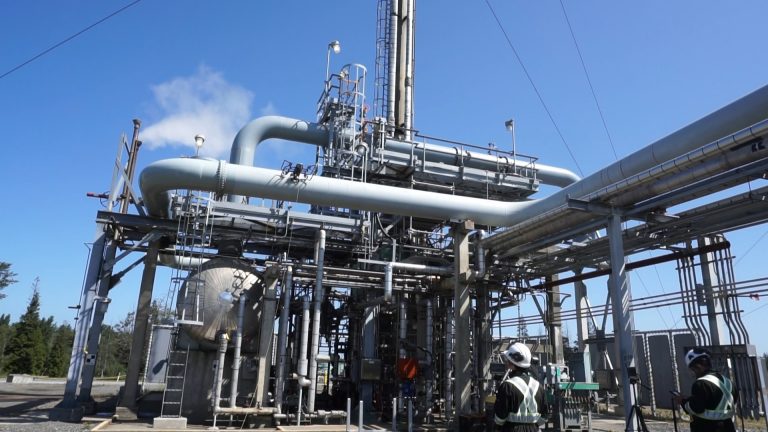
The third asset in question was an in-service flare stack, which posed a significant challenge to inspect due to its towering height and extreme temperature conditions. Flare stacks require shutting down operations to reduce the heat and make the conditions safe for inspectors, resulting in reduced productivity. By utilizing SKYRON, the need for shutdowns can be eliminated. The robot remains in contact with the surface being inspected, while inspectors can maintain a safe distance, ensuring maximum efficiency and safety. The advanced technology of SKYRON allowed it to navigate the high-temperature surface and took 27 readings in 8 minutes of flight time.
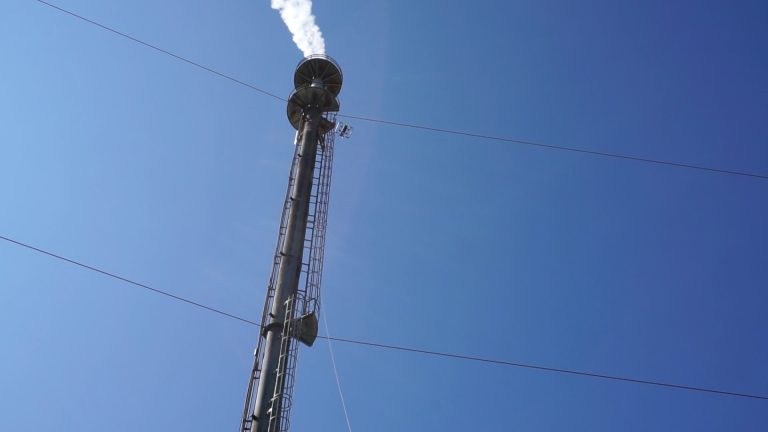
Using flying robots for NDT inspections proves that technological advancements can improve efficiency and safety in the oil and gas industry. With the ability to perform inspections faster, cost-effectively, and safely, intelligent flying robots like SKYRON can reduce downtime and increase productivity, saving refineries time and money. As the industry continues to evolve, it is clear that the use of advanced technology will play a vital role in ensuring the safety and reliability of equipment.

